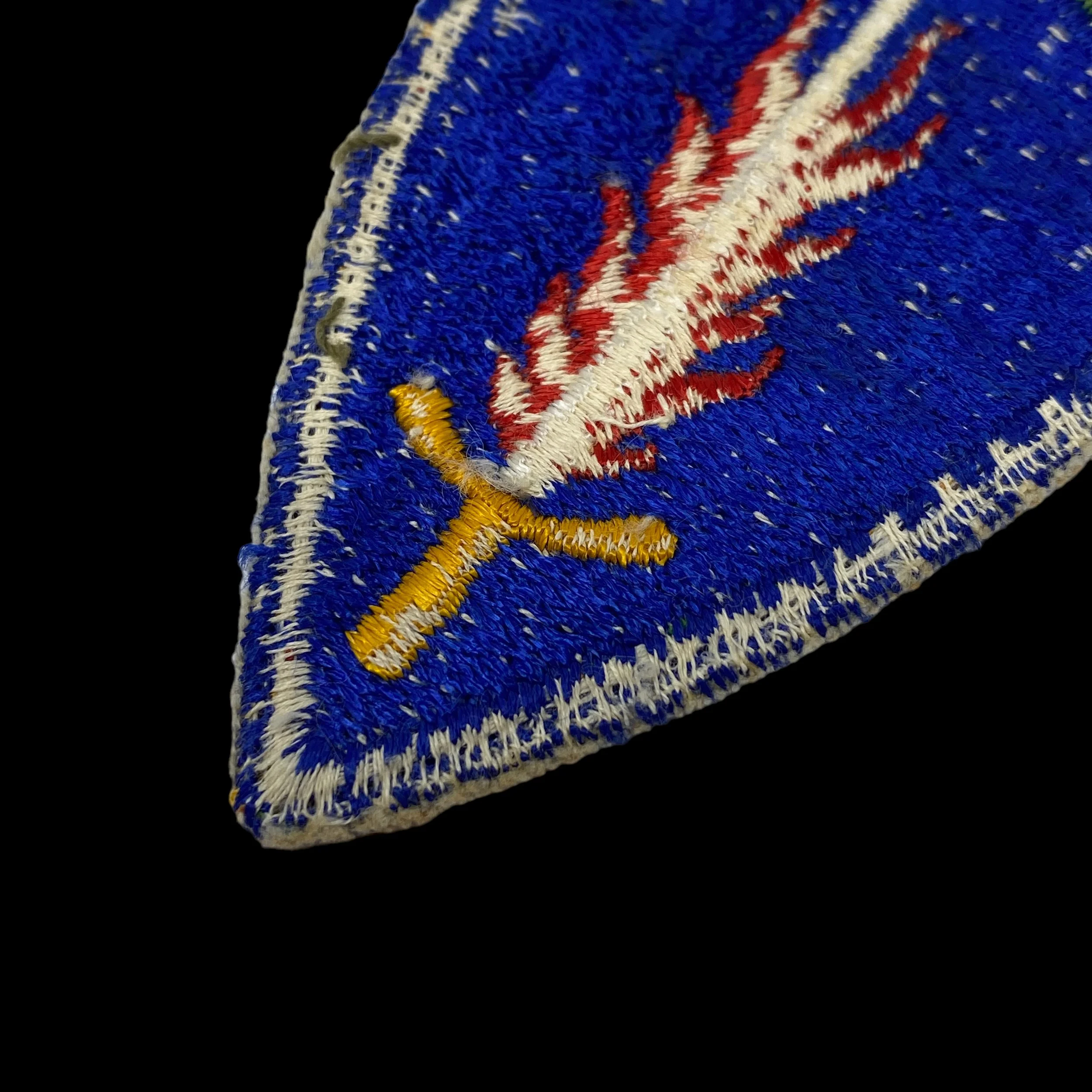Original Supreme Headquarters Allied Expeditionary Force (SHAEF) Shoulder Patch*
















Original Supreme Headquarters Allied Expeditionary Force (SHAEF) Shoulder Patch*
Comes with C.O.A.
This rare and museum-grade artifact is an original Supreme Headquarters Allied Expeditionary Force (SHAEF) patch. This SHAEF patch is in incredible condition for its age.
The Supreme Headquarters Allied Expeditionary Force (SHAEF) was the command organization responsible for the coordination of Allied forces during the invasion of Nazi-occupied Europe in World War II. Led by American General Dwight D. Eisenhower, SHAEF was a complex organization that brought together the military forces of the United States, Great Britain, Canada, and several other countries in the largest amphibious invasion in history.
The origins of SHAEF can be traced back to the planning stages of the Normandy invasion, codenamed Operation Overlord. In late 1943, Allied leaders, led by British Prime Minister Winston Churchill and US President Franklin D. Roosevelt, agreed that Eisenhower would be the overall commander of the Allied forces in Europe. In January 1944, Eisenhower was appointed as Supreme Commander Allied Expeditionary Force (SCAEF), and he quickly set about creating a staff to support him.
Eisenhower selected a team of experienced military leaders to serve as his key staff officers, including British General Bernard Montgomery and American General Omar Bradley. These officers were responsible for planning and executing the various aspects of the invasion, including the naval and air operations, as well as the ground assault on the beaches of Normandy.
One of the key challenges facing SHAEF was coordinating the efforts of the various national military forces that made up the Allied Expeditionary Force. SHAEF had to deal with the differing military cultures, equipment, and tactics of the various countries involved. This required a great deal of diplomatic skill, as well as careful planning and communication.
One of the most important tasks facing SHAEF was the selection of the invasion site. The Allies had a number of options, including the Pas de Calais region of France, which was the closest point to England, and the Normandy region, which was farther away but offered a number of advantages, including better beaches and more favorable terrain. After much debate, SHAEF decided to go with Normandy, which proved to be a crucial decision that contributed to the success of the invasion.
Once the site was selected, SHAEF had to plan the logistics of the invasion. This included everything from gathering and training the troops to the production and shipment of the massive amount of equipment and supplies needed for the operation. SHAEF also had to coordinate the efforts of the naval and air forces, which would provide crucial support for the ground troops.
The Normandy invasion, which took place on June 6, 1944, was a remarkable achievement that owed much to the work of SHAEF. Despite the challenges and complexities of the operation, SHAEF managed to pull together a cohesive and effective force that was able to overcome the German defenses and establish a foothold on the continent.
Following the success of the Normandy invasion, SHAEF continued to play a critical role in the Allied war effort. The organization was responsible for planning and executing the subsequent campaigns that led to the defeat of Germany, including the Battle of the Bulge and the final drive into Germany itself.
SHAEF was also involved in a number of key political and diplomatic initiatives, including the establishment of the United Nations and the post-war reconstruction of Europe. Through its leadership and coordination of Allied forces, SHAEF played a pivotal role in shaping the outcome of World War II and laying the groundwork for the post-war world.
In conclusion, SHAEF was a remarkable organization that played a critical role in the Allied war effort during World War II. Through its leadership and coordination of Allied forces, SHAEF was able to overcome the challenges and complexities of the invasion of Europe and establish a foothold on the continent. SHAEF's legacy can still be felt today, as the organization played a crucial role in shaping the post-war world and establishing the foundations for peace and stability in Europe.